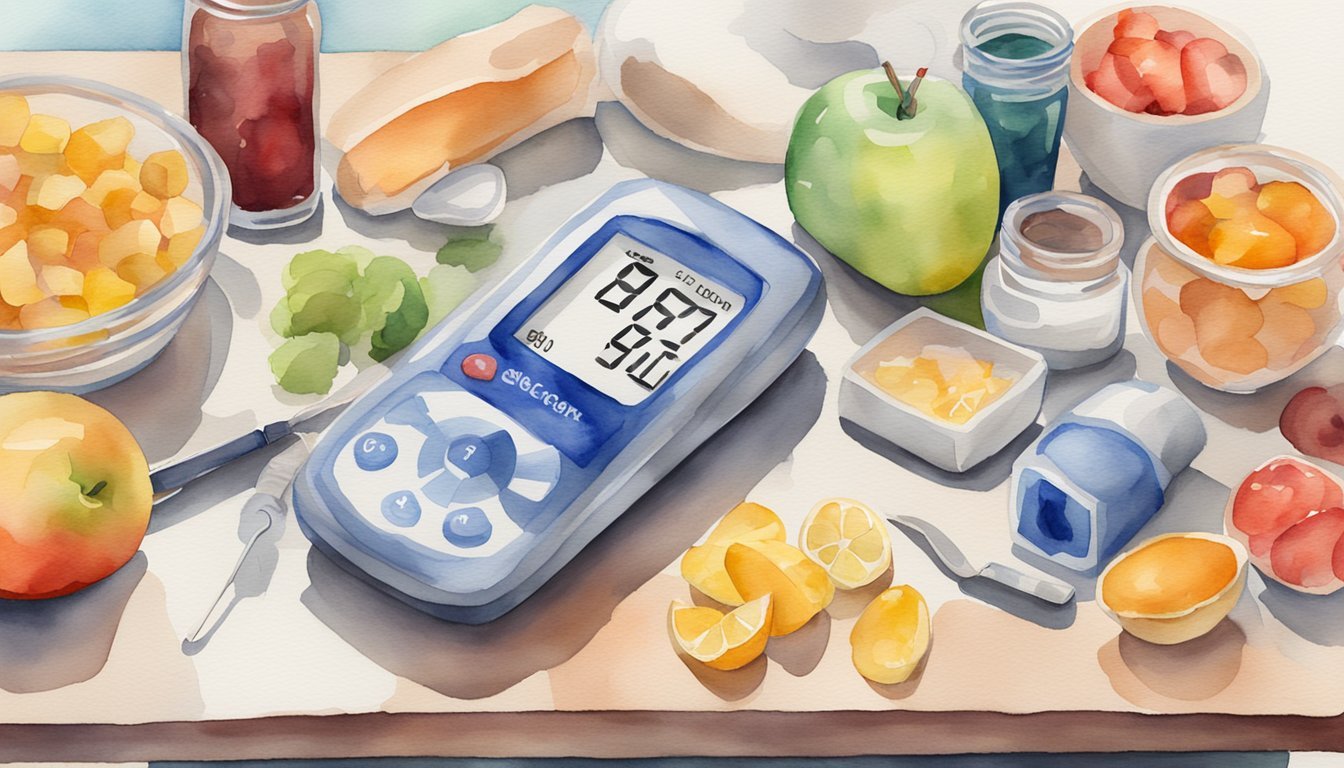Understanding Blood Sugar Levels
In maintaining optimal health, understanding how to monitor and interpret blood sugar levels is essential. Blood sugar, or glucose, is the primary source of energy for the body’s cells and is regulated by several hormones, including insulin.
Basics of Blood Sugar and Glucose Monitoring
Blood sugar levels are typically measured in milligrams per deciliter (mg/dL). The process of glucose monitoring is vital, particularly for individuals with diabetes. To monitor glucose levels, a device known as a glucometer is used in conjunction with a test strip. Blood is usually drawn from the fingertip and placed onto the test strip, which the glucometer reads to provide a glucose level reading.
Key Blood Sugar Targets and Ranges
For adults without diabetes, a fasting blood sugar level, which is the glucose level after not eating or drinking anything except water for at least eight hours, is considered normal when it is between 70 to 99 mg/dL. Postprandial glucose levels, which are measured after eating, should be lower than 140 mg/dL. The A1C test, which reflects the average blood sugar levels over the past three months, is considered normal when the result is below 5.7%. Higher percentages indicate an increased risk of diabetes or current diabetes status.
Impact of Age and Diabetes Types on Blood Sugar
Blood sugar targets can vary based on the individual’s age, particularly for those living with diabetes. Children and teens with type 1 diabetes, for example, have slightly different blood sugar range recommendations than adults. Type 2 diabetes, closely linked with lifestyle factors and often associated with older age, also has specific blood sugar range goals. Generally, managing blood glucose effectively can help prevent complications related to both hyperglycemia (high blood sugar) and hypoglycemia (low blood sugar).
Managing Blood Sugar in Diabetes

Managing blood sugar is critical for individuals with diabetes to maintain good health and prevent complications. This requires a careful balance of diet, exercise, and medication.
Effects of Diet and Exercise on Blood Sugar
Diet and exercise play pivotal roles in the management of diabetes. A balanced diet rich in fiber and low in simple carbohydrates is necessary to maintain a stable blood sugar level. Consistent exercise helps the body use insulin more efficiently, leading to improved control of blood sugar levels. Adults and children with diabetes are often advised to monitor the impact of various types of foods on their blood sugar, especially focusing on the amount of carbohydrates and sugars consumed.
For individuals with Type 1 diabetes—where the pancreas does not produce insulin—a combination of insulin therapy and dietary management is essential. Those with Type 2 diabetes or prediabetes may focus primarily on diet and exercise to manage blood sugar levels, typically aiming for a more moderate carbohydrate intake that includes complex carbs and proteins.
Medications and Medical Devices for Diabetes Control
There is a wide array of medications and medical devices designed to assist with diabetes management. These include insulin injections for insulin replacement therapy, oral glucose-lowering medications like SGLT2 inhibitors for those with insulin resistance, and new classes of drugs that can improve the efficacy of naturally produced insulin.
Moreover, technological advancements have brought forward devices such as the continuous glucose monitor (CGM), which can track glucose levels in the bloodstream throughout the day. Such devices offer real-time data, aiding in more precise adjustments to medication dosing and lifestyle interventions. Healthcare providers regularly evaluate the most appropriate treatments based on age group, overall health, and the specifics of an individual’s diabetes.
Dealing with Hypoglycemia and Hyperglycemia
Hypoglycemia and hyperglycemia are conditions that represent the low and high extremes of blood sugar levels, respectively. It’s vital for diabetic patients to know the symptoms and immediate treatment methods for these conditions.
In cases of hypoglycemia, where glucose levels fall below 70 mg/dL, patients are advised to consume fast-acting carbohydrates, such as glucose tablets or juice, to raise their blood sugar quickly. Hyperglycemia, on the other hand, may occur when blood sugar levels exceed the target range and could necessitate an adjustment in medication, an increase in physical activity, or an alteration in diet.
Constant vigilance and prompt action in response to glucose level fluctuations can prevent severe health conditions related to overtreating either condition. Regular glucose monitoring and consultations with a healthcare provider enable timely adjustments to treatment plans.

